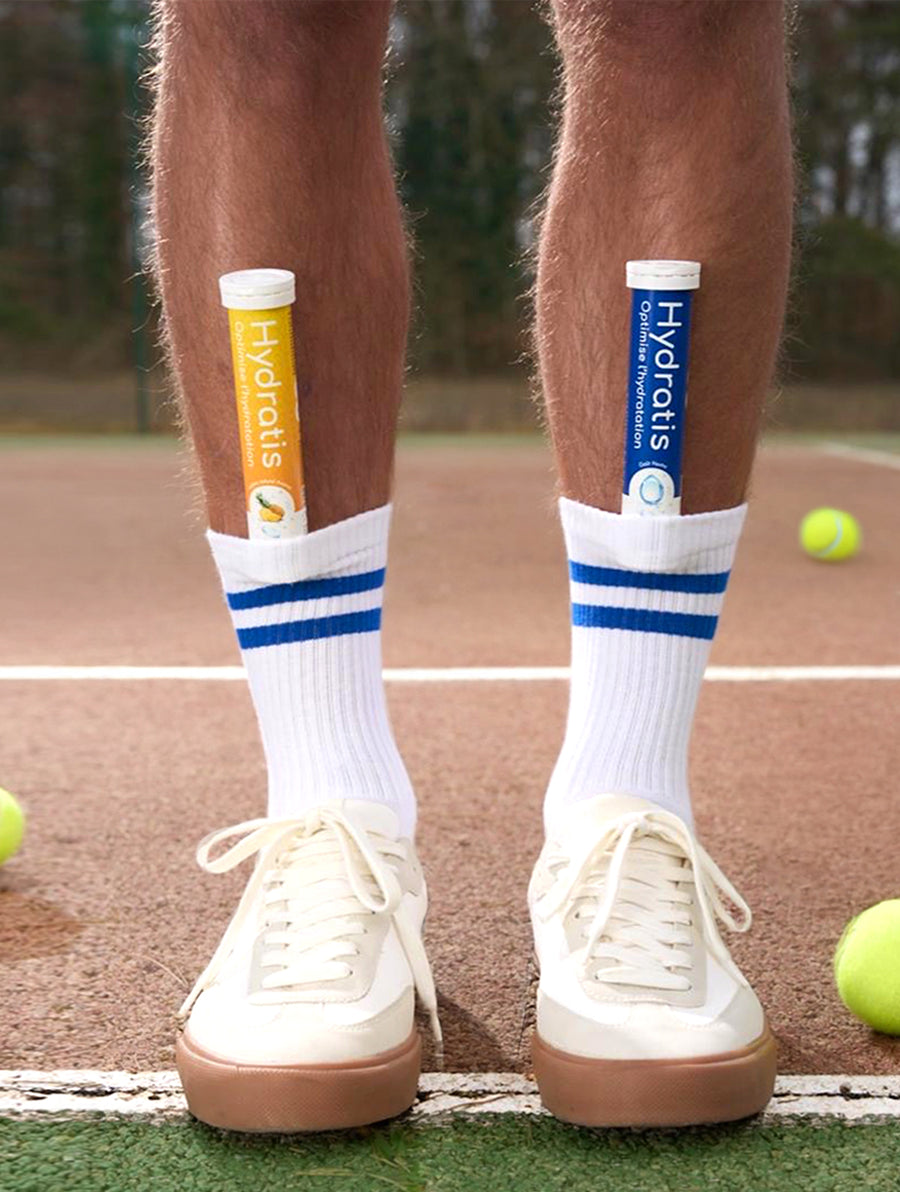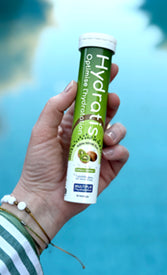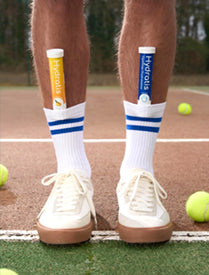Your body has subtle but revealing warning mechanisms. Among them is your skin's reaction to pinching, which is an excellent way to detect dehydration. Professionals call this checking elasticity. of the skin .
This simple, quick test, often used in clinical settings, allows for a rapid assessment of fluid balance , in addition to other bodily signals. A better understanding of these indicators will help you take action before signs of dehydration accumulate .
What is skin fold?
When skin is pinched and then released, it forms what is called a temporary crease. If hydration is sufficient , the skin quickly returns to its original shape . If, on the other hand, it remains creased or is slow to return to its normal position, this may indicate a hydration imbalance.
This phenomenon is linked to tissue tension. Supple skin indicates good water distribution in the body . Conversely, sluggish or loose skin may suggest fluid loss. This visual signal is particularly monitored in young children or in cases of prolonged illness.
It is also useful to differentiate between:
- a crease linked to dehydration, with tight skin that is slow to smooth out;
- and a fold due to a loss of fat mass, where the skin remains thin and loose.
The skinfold test: a simple way to assess hydration
This quick test, also used by doctors, involves gently pinching the skin, often on the back of the hand or forearm. Then, you observe whether it immediately returns to its original shape or not.

Here's how to perform the test at home
1. Choose a clean area at room temperature;
2. Gently grasp the skin between your thumb and forefinger;
3. Release, then observe: an immediate return is a good sign . A crease visible for more than one or two seconds may be a warning sign.
It's worth noting that in children, the abdomen or inner thigh are preferred for this skin manipulation . In adults, especially the elderly, the loss of natural skin elasticity can skew the results. Therefore, it's important to consider other factors, which we will discuss later.
This observational gesture is therefore part of a set of clinical indicators used to check hydration, just like monitoring body temperature, weight or urine status.
Other visible signs of dehydration
Besides skin observation, other symptoms They can alert you to things like:
● Dry mouth, pasty tongue sensation;
● Cracked lips , general discomfort;
● Unusual fatigue , dizziness when standing;
● Very dark urine or reduced quantity;
● Headaches , mild confusion, difficulty concentrating;
● Sunken eyes, pronounced dark circles.
In young patients, dehydration can cause a loss of appetite , irritability, or lack of energy . In older people, it can be more difficult to detect because the thirst reflex naturally diminishes with age.
Skinfold thickness and nutritional assessment: a tool used in medical settings
In a medical context, this test is integrated into a comprehensive health assessment . It is often performed in hospitals, nursing homes, or care facilities to monitor vulnerable patients.
In addition to this skin manipulation, healthcare professionals generally observe:
● Changes in body weight;
● The presence of signs of malnutrition (loss of fat mass, muscle wasting);
● Analysis of water and electrolyte intake ;
● The use, if necessary, of infusion solutions in cases of severe dehydration .
A device called a measuring compass It can also be used to check tissue thickness. This allows for a more precise approach, particularly in nutritional monitoring or during long hospital stays.
In all cases, this skin manipulation is non-invasive, quick and can be integrated into a complete clinical assessment.
Dry skin or dehydrated skin: how to tell the difference?
The two situations may seem similar, but their origins are distinct:
● Dry skin is skin that lacks lipids. It requires oil-rich care, or even specific nourishing products;
● Dehydrated skin lacks water. It can feel tight, look dull or uncomfortable, even if it produces sebum.
It is therefore possible to have oily but dehydrated skin . This paradox is common, especially among people living in dry climates or using skincare products unsuitable for their skin.
The pinch test can complement a visual observation. Skin that is slow to relax may require an adjustment of internal and external hydration.
What to do in case of a persistent crease?

Adjust your fluid intake
● Drink small sips regularly throughout the day, even without waiting until you are thirsty;
● Alternate between water, herbal teas, broths or semi-skimmed milk, which are sources of water and minerals;
● Favor foods rich in water: salads, fresh fruits, compotes.
For everyone, it's important to increase fluid intake during periods of heat , physical activity , or episodes of diarrhea . For children, remember to offer drinks frequently.
Identify the causes of dehydration
Certain situations should raise alerts such as:
● Persistent vomiting or diarrhea ;
● Prolonged fever ;
● Taking diuretic medications;
● Chronic conditions (diabetes, mild renal insufficiency);
● Exposure to excessive heat without adjustment of intake.
Consult a doctor if the symptoms persist.
A medical consultation is necessary if you notice:
● A rapid worsening of symptoms;
● Sudden weight loss;
● Unusual behavior in a child;
● A significant decrease in the amount of urine.
The professional will be able to make an accurate diagnosis and recommend appropriate treatment: namely, an oral rehydration solution or an IV infusion in the most serious cases . In some cases, an analysis of the underlying causes (underlying pathology, unbalanced diet) will be necessary.
In summary: listen to your skin's signals to preserve its health
This quick skin rehydration test is a simple, accessible, and useful tool for everyone. Whether you're a parent, athlete, healthcare professional, or caregiver for an elderly loved one, this test can help you prevent the consequences of dehydration.
However, it does not replace medical advice. If a skin test shows signs of dehydration, it is recommended to consult a healthcare professional .
Your skin reflects much more than its outward appearance; it's a true barometer of your internal state. Listening to it means protecting your balance .
Bibliography
Cherney, K. (2023, October 23). Is my skin dehydrated? Healthline. https://www.healthline.com/health/dehydrated-skin
Esparza-Ros, F., Moreira, AC, Vaquero-Cristóbal, R., Barrigas, C., Albaladejo-Saura, M., & Vieira, F. (2022). Differences between Four Skinfold Calipers in the Assessment of Adipose Tissue in Young Adult Healthy Population.
Nutrients, 14(10), 2085. https://doi.org/10.3390/nu14102085
Taylor, K., & Tripathi, AK (2025, March 5). Adult dehydration . StatPearls - NCBI Bookshelf. https://www.ncbi.nlm.nih.gov/books/NBK555956/
McGarvey, J., Thompson, J., Hanna, C., Noakes, T.D., Stewart, J., & Speedy, D. (2008). Sensitivity and specificity of clinical signs for assessment of dehydration in endurance athletes. British Journal Of Sports Medicine , 44 (10), 716 - 719. https://pubmed.ncbi.nlm.nih.gov/18981042/
Skin turgor: MedlinePlus Medical Encyclopedia. (nd).
https://medlineplus.gov/ency/article/003281.htm
Health Insurance – ameli.fr. (sd).
Dehydration. https://www.ameli.fr/assure/sante/urgence/pathologies/deshydratation






